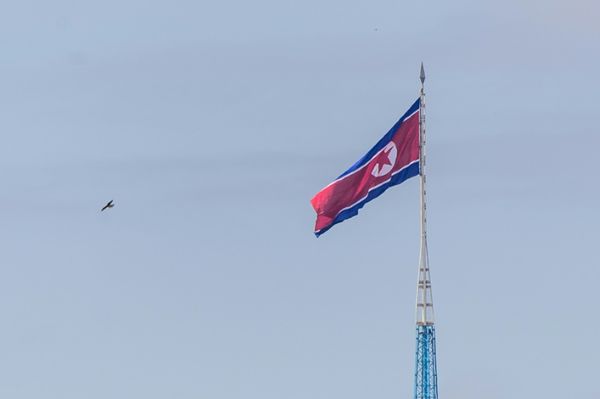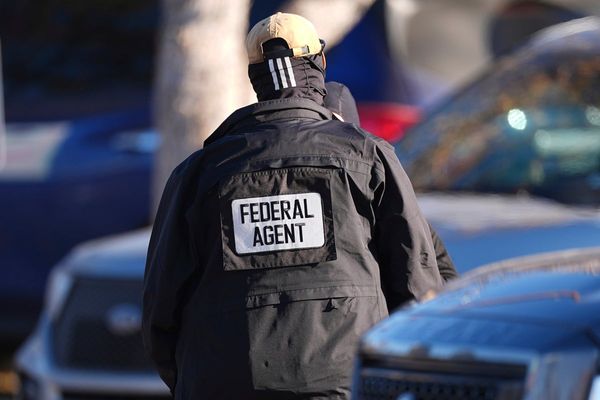
New South Wales is in for a run of sweltering days after Monday proved Sydney’s hottest in two years and high fire danger saw uncontrolled blazes across the state.
The autumn heatwave bearing down on the state has created the broadest area of high fire danger since the black summer bushfires, the Rural Fire Service warned, with no reprieve until Thursday.
The temperature in Sydney soared to 38C on Monday, after a widespread heatwave warning was issued for the state, with some areas expected to exceed 40C.
The Bureau of Meteorology warned that overnight temperatures would remain high while “minimum temperatures in the high teens to low 20s are expected during the early part of this week”.
While the Bureau cancelled the heatwave warning for the mid-north coast district on Monday at 3pm , high fire danger remained across much of the state west of the Great Dividing Range.
The Department of Education closed 34 schools in areas with an elevated bushfire risk across the central ranges.
Greg Allan, a Rural Fire Service spokesperson, said 38 grassfires were burning across the state Monday afternoon, 10 of which were not yet contained.
This burst of hot weather has seen nearly 40 bush fires burning across NSW this afternoon. At 3pm Monday 6 March, there's 38 bush and grass fires. The Alpha Road fire near Mudgee is at Emergency Warning, while the fire near Burrendong Dam is at Watch & Act. #nswrfs pic.twitter.com/4gi7u870XA
— NSW RFS (@NSWRFS) March 6, 2023
He said the greatest concern was for an uncontrolled fire burning in the vicinity of Pyramul Creek, south-west of Mudgee, in the central west, that’s spreading towards Tambaroora.
An emergency warning is in place, with residents of the 50 affected properties told it is too late to leave.
“Crews are working with the assistance of waterbombing aircraft and heavy plant machinery to contain the fire, which is burning in rugged and largely inaccessible terrain,” the RFS said.
With hot and dry conditions affecting NSW, firefighters are working to contain over 40 fires. Crews are being supported by aircraft, including large air tankers. This footage from earlier today shows the #NSWRFS LAT “Marie Bashir” working on the Alpha Rd Fire at Tambaroora. pic.twitter.com/2Ub3t9o9CW
— NSW RFS (@NSWRFS) March 6, 2023
An 80-hectare grass fire is also burning in the Burrendong area, 15km south-east of Wellington and out of control.
The residents have been warned to prepare as the wind could take the fire in a south-east direction, Allan said.
Seven total fire bans have been declared across the Hunter, central ranges and lower central west plains which are facing extreme fire danger, as well as the southern ranges, north western, northern slopes and upper central west plains where the danger is high.
Ben Shepherd of the RFS said the danger is predominantly west of the Great Dividing Ranges, “really stretching from the Southern Ranges right up through the Lower and Central West Plains, right up towards the north-western part of the state”.
“It’s probably the broadest areas of risk since that 19/20 fire season,” Shepherd said.
Shepherd said this was also the first time since the black summer bushfires that high levels of fire danger were expected to continue for a prolonged period, with no reprieve in the extreme temperatures until Thursday.
There is also a severe weather warning for damaging winds for parts of the south coast, southern tablelands, Snowy Mountains, Canberra and south-west slopes districts.
Peak gusts of 90km/h to 100km/h are possible in areas including Braidwood, Jindabyne, Perisher Valley, Charlotte Pass, Thredbo and Adaminaby.
Of the nation’s capital cities only Darwin is experiencing the same autumn swelter with 30C, while Melbourne is a mild 20C, Brisbane 29C, Perth 21C, Adelaide 17C, Hobart 19C and Canberra is 25C.







